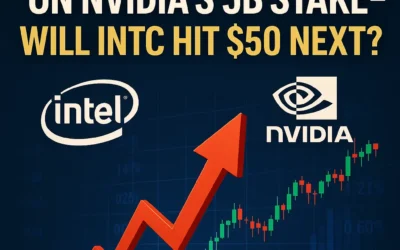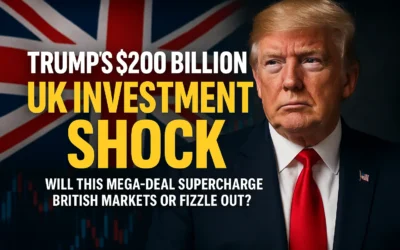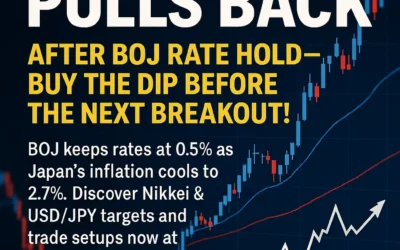In an era marked by a digital revolution in payments, Visa Inc. stands as a global leader, steering consumers and businesses alike toward a borderless financial future. The company is at the forefront of the contactless payment movement, with the backing of major investors like Chris Hohn, Wally Weitz, and Terry Smith. But what is the secret behind Visa’s universal trust? In this article, we uncover how Visa has become a titan of our daily financial lives, the strength of its business model, and the challenges it faces as it navigates an increasingly competitive and regulated industry.
For those looking to embark on their investing journey, our affiliate link for Trade Republic offers a €30 bonus in shares as a gift when you complete three purchase transactions in ten days: Trade Republic.
Business Model: Visa’s Role as a Payment Network Powerhouse
Visa operates on a unique business model that differentiates it from traditional financial institutions. As a payment technology company, Visa connects consumers, merchants, and financial institutions via VisaNet, its proprietary transaction-processing network. Rather than issuing credit or debit cards directly or managing customer accounts, Visa acts as an intermediary, facilitating and securing payments between parties. This model has positioned Visa as the dominant player in the payment industry, accounting for 61% of all issued bank cards globally, far outpacing Mastercard’s share.
Every time a consumer makes a purchase with a Visa card, a complex series of processes occurs seamlessly behind the scenes, orchestrated by VisaNet. While the Visa logo might appear on the card, it is issued by the consumer’s bank, which sets the terms and conditions for the card, including rewards and interest rates. Visa itself profits indirectly from each transaction rather than from direct fees charged to consumers.
Revenue Streams: How Visa Makes Money
Visa’s revenue model is built on three core streams:
Data Processing: This segment accounts for 49% of Visa’s revenue, primarily through fees collected on transaction volumes.
Service Fees: Representing 45.4% of revenue, these fees are paid by issuing banks for Visa’s services.
International Transactions: At 35.6% of revenue, this stream includes fees for cross-border transactions and currency conversion.
Visa charges merchants fees that can reach up to 2% of the transaction amount, though the end consumer does not see these costs directly. This structure has enabled Visa to maintain high gross and operating margins, with a gross margin of 77.5% and an operating margin of 67.2%, both well above industry averages.
Visa’s unique “chaordic” organizational model—combining elements of chaos and order—distributes authority among its stakeholders. This structure fosters adaptability and innovation, characteristics that have been integral to Visa’s success in the ever-evolving financial sector since the 1960s.
Growth Strategy: Organic Expansion and Strategic Acquisitions
Visa’s dominance in the online payments space is underscored by its 41.7% share of global online credit card purchase volume, according to a 2022 study by Nelson. This is a significant lead over Mastercard, which holds a 27.4% market share. Beyond organic growth, Visa actively pursues strategic acquisitions to fuel expansion and strengthen its market position.
Recent acquisitions include:
- Prosa: A Mexican payment processor, enhancing Visa’s foothold in Latin America and promoting secure digital payment adoption.
- Pismo: Acquired for $1 billion, this banking and payment platform expands Visa’s capabilities in debit, prepaid, and commercial cards, catering to both financial institutions and fintech firms.
These acquisitions illustrate Visa’s commitment to sustaining long-term growth. However, it’s worth noting that these deals represent inorganic growth—growth through acquisitions rather than internal expansion—which can carry both benefits and integration risks.
According to Research and Markets, the global digital payments market was valued at $81.03 billion in 2022, with projections suggesting it could exceed $361.3 billion by 2030, growing at an annual rate of 20.05%. Visa’s dominant market position places it in an ideal spot to capitalize on this rapid sector expansion in the years ahead.
Financial Strength: Debt Management and Free Cash Flow
Visa’s financial health is further solidified by its exceptional free cash flow (FCF) management. Over the past decade, Visa has maintained an annual revenue growth rate of 10.7% and a net income growth rate of 13.2%, reflecting its ability to expand transaction volumes while enhancing profitability. This robust growth has been supported by a 53% increase in FCF over the past five years.
In 2023, Visa’s net debt stood at $1.7 billion, increasing slightly to around $2 billion. This figure is modest compared to Visa’s FCF, which reached over $66.4 billion over the last five years. In theory, Visa could repay its entire net debt in just one month using its FCF, highlighting the company’s strong financial resilience. Additionally, Visa’s interest-to-operating-income ratio stands at a low 1.5%, underscoring its effective debt management.
Profitability Metrics: Margins and Return Ratios
Visa’s profitability is one of its key competitive advantages. The company boasts an impressive gross margin exceeding 80%, a result of its low variable costs, where each additional transaction incurs minimal costs. This high gross margin is a testament to Visa’s efficient operations and scalable business model.
The company’s net margin over the past five years has averaged 51.5%, significantly higher than the industry average of 32.3%. This level of profitability allows Visa to convert revenue into actual profits efficiently, making it a financially robust player in the payment industry.
Other key profitability metrics include:
Return on Equity (ROE): Averaging 37% over the past five years, Visa demonstrates an efficient use of shareholder capital.
Return on Assets (ROA): At 16.3%, Visa showcases its ability to generate profits from its assets, signaling effective resource allocation.
Dividend Potential: A Strong Cash Generator for Shareholders
Visa has consistently increased its dividends, growing from $0.10 per share quarterly to $0.52 over the last decade—a nearly fivefold increase. With an average annual dividend growth rate of 18% over the past ten years, Visa has proven itself as a reliable dividend payer.
Despite its rising dividend payouts, Visa maintains a low cash-flow payout ratio of around 20%, ensuring ample cash flow for reinvestment and shareholder returns. This conservative payout approach enables Visa to reinvest 80% of its FCF, supporting share buybacks and potential growth investments.
Visa’s dividend sustainability is further supported by its ability to generate substantial FCF, which increased from $2.66 per share in September 2014 to $9.39 currently. The company’s recent $25 billion share buyback plan signals management’s commitment to delivering long-term shareholder value.
Challenges: Valuation and Regulatory Risks
Valuation Concerns
Visa’s high valuation multiples indicate that the market has lofty expectations for its growth. With a price-to-earnings (P/E) ratio of 32.67, compared to an industry average of 17.85, Visa’s stock trades at a premium. Similarly, Visa’s price-to-cash-flow (P/CF) ratio is 14.46, above its competitors’ average of 12.21. This premium suggests that investors are willing to pay a significant amount for Visa’s earnings, reflecting confidence in its growth potential.
A discounted cash flow (DCF) analysis estimates Visa’s intrinsic share price around $181.14, while its market price is currently $291.85, indicating an overvaluation of approximately 57%. Although Visa’s premium valuation is supported by its market leadership and financial stability, investors should approach with caution given the potential for price corrections.
Regulatory and Competitive Risks
Visa and Mastercard together control nearly 80% of the global card market, which has attracted regulatory attention. Governments worldwide view these companies as dominant players, potentially stifling competition. Visa’s oligopoly status subjects it to regulatory scrutiny, which could lead to restrictions or fines that might impact profitability.
Additionally, Visa faces growing competition from fintech companies and decentralized finance (DeFi) solutions, which provide low-cost alternatives to traditional payment networks. Fintech disruptors like Square and PayPal appeal to a broad consumer base, and the rise of blockchain and cryptocurrency-based payment options represents a new challenge for Visa’s business model.
Conclusion: A Long-Term Growth Story with Premium Valuation
Visa’s strengths—its market dominance, resilient business model, high profitability, and robust cash flow generation—solidify its position as a leader in the digital payment sector. With significant free cash flow and a track record of strategic acquisitions, Visa is well-positioned to capture future growth opportunities in a rapidly expanding market.
However, Visa’s valuation is high relative to industry peers, reflecting investor expectations of continued growth and resilience. Regulatory pressures and competition from fintech companies present ongoing challenges, but Visa’s established market position and adaptability make it a solid investment for those with a long-term horizon.
For investors seeking a stable and growing company in the digital payments space, Visa represents a compelling choice. Yet, the stock’s premium valuation warrants caution, especially in a fluctuating economic environment. Visa’s long-term success will depend on its ability to navigate regulatory landscapes, innovate in a rapidly evolving sector, and maintain shareholder value amidst increased competition.
For more insights into analyzing value and growth stocks poised for sustainable growth, consider this expert guide. It provides valuable strategies for identifying high-potential value and growth stocks.
We also have other highly attractive stocks in our portfolios. To explore these opportunities, visit our investment portfolios.
This analysis serves as information only and should not be interpreted as investment advice. Conduct your own research or consult with a financial advisor before making investment decisions.









0 Comments